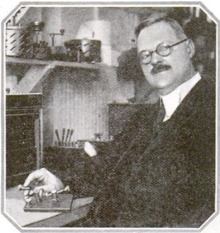Nationality American Role Developer | Name Greenleaf Pickard | |
 | ||
Born February 14, 1877 ( 1877-02-14 ) Education Harvard John A. Paulson School of Engineering and Applied Sciences Notable awards IEEE Medal of Honor (1926) | ||
Greenleaf Whittier Pickard (February 14, 1877, Portland, Maine - January 8, 1956, Newton, Massachusetts) was a United States radio pioneer. Pickard was a researcher in the early days of wireless. He was responsible for the development of the crystal detector, (cat's whisker detector), a radio wave detector which was the central component in early radio receivers called crystal radios, which were the most widely used radio receivers until about 1920 and continued to be used until World War 2. He also experimented with antennas, radio wave propagation, and noise suppression. On August 30, 1906 he filed a patent for a silicon crystal detector, which was granted on November 20, 1906. Pickard's detector was revolutionary in that he found that a fine pointed wire known as a "cat's whisker," in delicate contact with a mineral produced the best semiconductor effect. On June 10, 1907, he filed a patent for a Magnetic Aerial (a loop aerial) which was granted on January 21, 1908. Pickard's loop antenna had directional properties that could be used to reduce interference to the intended wireless communications. Greenleaf Whittier Pickard was named after his great-uncle, the American Quaker John Greenleaf Whittier (1807-1892). Pickard was president of the Institute of Radio Engineers in 1913.
Patents
Reissued
